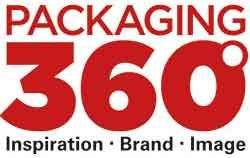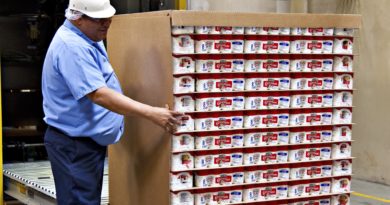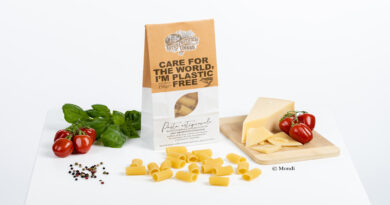Corrugated Board Industry Feels Cost Pressure and Warns of Reuse Quotas
The German corrugated board industry suffered a drop in sales in 2022. According to the Association of the German Corrugated Board Industry (VDW), it was once again confronted with unprecedented cost pressure and a considerably cooled down consumer climate. The current draft for a new EU packaging regulation now threatens to put corrugated board at a disadvantage in the future, the VDW said.
“The corrugated board industry often tracks overall economic developments like a seismograph, because we continue to provide the most important transport packaging for various other industries. More than two-thirds of all goods in Germany reach their destination securely packed in corrugated board,” explained VDW Chairman Dr. Steffen P. Würth during the annual press conference of the association, which has moved its headquarters from Darmstadt to Berlin.
“2022 was marked by market distortions as a result of the Russian war against Ukraine, the energy crisis, and an increasingly deteriorating consumer climate. The corrugated board industry was hit correspondingly hard by developments, as more than two-thirds of all goods transported in Germany are packaged in corrugated board,” Würth explained.
Corrugated board plays a significant role as transport packaging for food and luxury goods. According to Würth, this group had accounted for 41.8 percent in 2022 – and thus continued to represent the largest share. Consumers have responded to the rising cost of living by, among other things, actually buying less food. According to the German Federal Statistical Office, the stationary retail sector suffered real sales losses of five percent in 2022 compared with the previous year. Individual product groups were affected even more severely. “Against this background, it is not surprising that the corrugated board industry’s balance sheet for 2022 is also leaner than in previous years.”
In terms of volume sales, the companies organized in the VDW recorded a decline of 635 million square meters in 2022 compared to the previous year, with sales of 8,029 million square meters. This corresponds to a minus of 7.3 percent.
At the same time, the corrugated board industry was confronted with new record levels in paper prices in 2022. After the cost of the industry’s most important raw material had already climbed dramatically in 2021, corrugated base paper became more expensive by a further 11.2 percent from January to June 2022. This was followed by an extremely high plateau phase that lasted until October. Only then did the price level begin to fall but in December 2022 it was still 40.8 percent higher than the last low point in September 2020. “This meant that the cost pressure on corrugated base paper in the overall view in 2022 remained at a level that can only be seen as a massive burden for our industry,” the VDW chairman emphasized. Added to this were the price effects of the energy crisis.
In terms of average revenues, the industry recorded an increase of 17.9 cents per square meter to an average of 75.7 cents per square meter in 2022 compared to the previous year, which corresponds to an increase of 31 percent. In terms of sales, the corrugated industry achieved a 21.3 percent increase in 2022 due to higher revenues. “However, these positive developments in average revenues and sales were nowhere near able to compensate for the extreme cost pressure in corrugated base paper and energy supply,” Würth said.
The association is critical of the drafted European packaging regulation. The industry expressly supports the overriding objectives of the proposal, as the VDW Chairman emphasizes: “Corrugated board packaging is closed-loop packaging. With an average recycling rate of over 80 percent in our products, our industry is even significantly dependent on a successfully functioning materials cycle. And VDW members have also long pursued the strategy of ever more economical use of materials with packaging that is ever more precisely tailored to the goods.” However, the VDW rejects the mandatory reusable quotas envisaged in the draft – 90 percent for transport packaging for large household appliances from 2030 and 50 percent for e-commerce packaging starting 2040. “For us, the study situation clearly shows that blind quota requirements cannot be the solution. In practice, they could even force packaging industries to have to use a less sustainable option. In two recent studies on e-commerce and transport packaging, corrugated board was able to outperform reusable packaging in specific comparative cases. Against this backdrop, we consider the recurring claim that reusable packaging is always the ecologically better choice to be a myth,” Würth explained.
In addition to the aforementioned quotas, the EU Commission is seeking a general ban on fruit and vegetable packaging weighing up to 1.5 kilograms, which would also affect corrugated board. “In this draft, recyclable corrugated board packaging is lumped together with disposable plastic based on fossil raw materials in a completely undifferentiated manner.” The association is calling for corrugated board to be exempted from this planned regulation.




